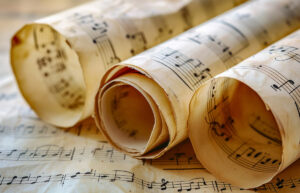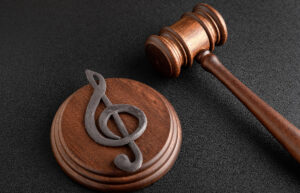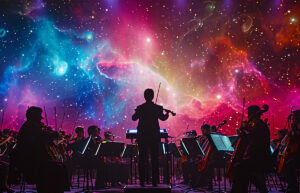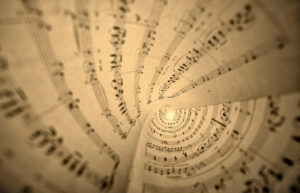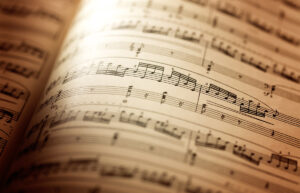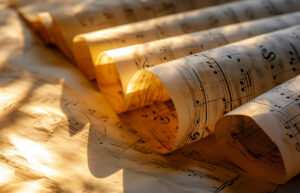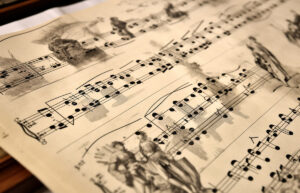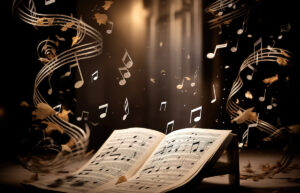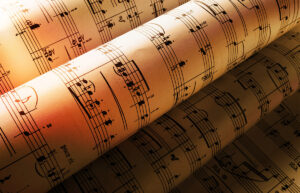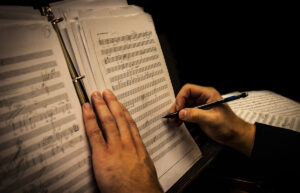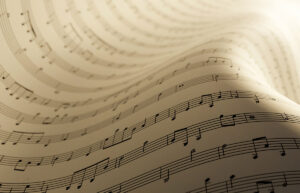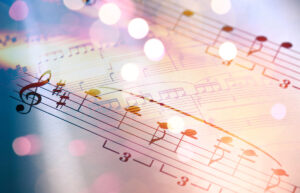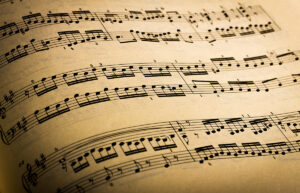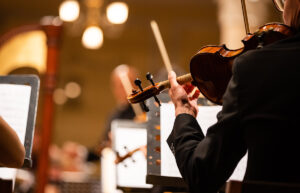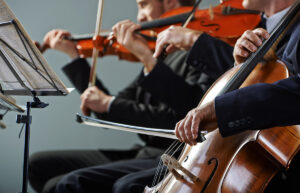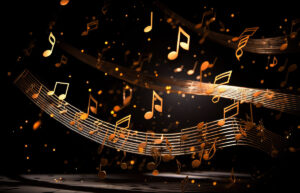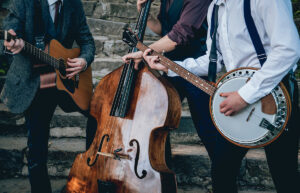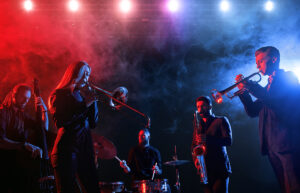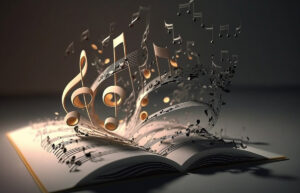What is Jazz Music: Meaning, History, Styles, Musicians & More

Welcome to the dynamic realm of jazz music, where rhythms pulse with a life of their own, and melodies weave tales of improvisation and innovation. Envision immersing yourself in a musical landscape as diverse as the cultures that gave birth to it, where each note embodies the spirit of freedom and creativity. Embark on a journey to uncover what is jazz music, a genre that transcends mere musicality, evolving into a perpetual dialogue among instruments, styles, and emotions. Are you prepared to tap your toes and delve into the soulful depths of jazz? Let’s dive in!
Welcome to TheDemoStop, now join the community!
Connect with artists, fans and producers around the world.
What is jazz music?
Jazz music is a multifaceted genre characterized by complex harmony, syncopated rhythms, and a significant emphasis on improvisation. Originating in the nineteenth century among Black musicians in New Orleans, Louisiana, jazz evolved within a rich musical tradition that prominently featured ragtime and blues.
Early jazz innovators like Jelly Roll Morton and Louis Armstrong expanded upon these blues and ragtime roots, introducing improvisation and birthing a unique American music genre. With time, the musical form underwent evolution, embracing a spectrum that spans popular music standards, modal music, pop, rock, funk, and even avant-garde compositions. In exploring what is jazz music, you will uncover a dynamic musical style that has left an indelible mark on the cultural landscape.
What is the history of jazz music?
The history of jazz music is a fascinating journey that delves into the rich cultural tapestry of New Orleans in the 19th century. Rooted in the musical traditions of West Africa and Europe, jazz embodies a distinctive blend of rhythmic complexity, blues influences, and harmonic chords. The question, “What is jazz music?” finds its answer in the diverse origins of this genre, which seamlessly integrated elements such as church hymns, slave songs, field chants, and Cuban-style rhythms.
Jazz found its genesis in New Orleans, where it flourished as a dynamic convergence of musical styles. Congo Square, established before 1820, played a pivotal role as a gathering space for slaves from various nations, each contributing their unique musical heritage to the mix.
New Orleans, serving as a melting pot of cultural diversity, provided the ideal environment for jazz to take shape. It became a haven where enslaved individuals from different nations could freely come together and express themselves through music—an opportunity not readily available elsewhere. The roots of jazz extend back to the vibrant tradition cultivated in Congo Square, laying the foundation for a dynamic and evolving musical culture.
The evolution of jazz continued as African and Caribbean musical influences converged with the introduction of marching band instruments during the Civil War, giving rise to the distinctive genre of ragtime. Spiritual music from the era, along with the migration of formerly enslaved people bringing blues from the American South to Louisiana after the Civil War, further contributed to the genre’s development.
Characteristics of jazz music
Improvisation
Jazz is characterized by a prominent emphasis on improvisation, where musicians creatively generate melodies, solos, and harmonies spontaneously during performances. This unique aspect allows for personal expression and the exploration of distinct musical ideas within the framework of a piece. The core element of improvisation sets jazz apart, often prompting the question, “What is jazz music?” and contributes to the individuality of each jazz performance.
Call and response techniques
Call and response techniques, deeply embedded in African musical traditions, are a common feature in jazz. This technique involves a musical dialogue, either among different instruments or between a soloist and the rest of the band. The process unfolds as a musician introduces a musical phrase (the “call”), prompting others to respond with their unique phrases (the “response”). This dynamic interplay cultivates a musical conversation, injecting energy and momentum into the performance.
Syncopation
Syncopation is a rhythmic technique that involves accenting offbeats or weak parts of the measure instead of the strong downbeats. Jazz music often incorporates syncopated rhythms, adding a sense of unpredictability and energy. This rhythmic complexity contributes to the distinctive and lively nature of jazz.
Polyrhythms
Jazz music, with its dynamic nature, frequently embraces polyrhythms, a technique where multiple rhythmic patterns or meters are used simultaneously. Musicians adeptly weave distinct rhythms together, creating intricate and layered textures within the music. This approach contributes to the genre’s richness and complexity, offering diverse and captivating rhythmic structures within a single piece, answering the question, “What is jazz music?”
Swing and blue notes
Swing, a distinctive element of jazz, encompasses a rhythmic feel that imparts a sense of momentum and groove to the music. This technique involves playing eighth notes in a unique “swung” or uneven manner. In jazz melodies, blue notes, microtonal variations of specific pitches, are frequently employed, infusing the music with an expressive, melancholic, or “bluesy” quality. The integration of these blue notes enhances the emotional depth and richness of jazz performances.
Different styles of jazz music
Early jazz
Various styles of jazz music have evolved over time, and one distinctive genre is early jazz, also referred to as Dixieland or New Orleans jazz. Originating in the late 19th to early 20th centuries in New Orleans, Louisiana, this style is deeply rooted in a fusion of African rhythms, blues, spirituals, and ragtime. Early jazz is known for its hallmark features of collective improvisation, syncopated rhythms, and an overall lively and energetic atmosphere. Instrumentation commonly includes prominent use of the trumpet, clarinet, trombone, and piano within these ensembles.
Big bands & swing music
In the 1920s and ’30s, big band and swing music experienced a surge in popularity. Led by renowned bandleaders like Duke Ellington, Count Basie, and Benny Goodman, big bands comprised sizable ensembles, including brass, woodwind, and rhythm sections. This musical style emphasized well-orchestrated compositions, rhythmic swing, and highlighted individual soloists within the ensemble. The upbeat and danceable tunes of swing music became the defining soundtrack of that era.
Bebop
Bebop, emerging in the 1940s, was a response to the constraints of big band music. It emphasized fast tempos, intricate harmonies, and complex melodies. Bebop musicians, including Charlie Parker, Dizzy Gillespie, and Thelonious Monk, focused on small group settings that allowed for extended improvisation and virtuosic soloing. This movement introduced a new level of technicality and musical innovation to jazz. What is jazz music indeed evolved with bebop’s emphasis on individual expression and intricate musical elements.
Gypsy jazz
Gypsy jazz, also referred to as “Jazz Manouche,” emerged in France during the 1930s and gained prominence through the contributions of guitarist Django Reinhardt. This musical style seamlessly intertwines traditional Romani music with jazz components, showcasing instruments like acoustic guitars, violin, double bass, and occasionally accordion.
The distinctive characteristics of gypsy jazz include fast tempos, improvisational elements, and lively rhythms, often delivered with a unique swing feel. In the midst of this fusion of influences, one may ponder, “What is jazz music?” Gypsy jazz provides a distinctive response, harmonizing cultural traditions to create a vibrant and captivating musical experience.
Cool jazz
Welcome to TheDemoStop, now join the community!
Connect with artists, fans and producers around the world.
Cool jazz emerged in the late 1940s and ’50s as a more relaxed and understated response to bebop’s intensity. Characterized by its softer, more melodic approach, cool jazz featured slower tempos, subtle improvisation, and a focus on mood and atmosphere. Musicians such as Miles Davis, Chet Baker, and Dave Brubeck were prominent figures in the cool jazz movement.
Hard bop
Emerging in the mid-1950s, hard bop was a reaction to the cool jazz movement. It retained bebop’s fast tempos and improvisational style but incorporated elements of blues, gospel, and R&B. Hard bop featured strong, driving rhythms, soulful melodies, and a focus on expressive, hard-hitting performances. Artists like Art Blakey, Horace Silver, and Cannonball Adderley were influential figures in the hard bop style.
Fusion jazz
Fusion jazz emerged in the late 1960s and ’70s, blending jazz with elements of rock, funk, and other genres. It incorporated electric instruments, synthesizers, and experimental sounds. Fusion jazz aimed to break traditional boundaries, resulting in a more eclectic and experimental approach to music. Artists like Herbie Hancock and Weather Report were influential in fusion jazz.
Essential jazz instruments
Drums
In understanding what is jazz music, the drum kit plays a fundamental role by providing the rhythmic foundation of the music. Drummers utilize components like snare drums, bass drums, cymbals, and tom-toms to craft intricate rhythms, syncopations, and textures. Their contribution enhances the overall groove and energy of the music, playing a crucial role in establishing the tempo and supporting improvisation.
Bass
The double bass or electric bass guitar serves as the anchor of the harmonic and rhythmic structure in jazz. Bassists establish the foundation by playing the root notes of chords, outlining chord progressions, and maintaining the pulse of the music. They often collaborate closely with the drummer, forming a solid rhythmic backbone for the ensemble.
Guitar
In jazz, the guitar plays a versatile role, providing harmonic accompaniment, melodic lines, and occasional solos. Jazz guitarists use various techniques like chord voicings, arpeggios, and single-note improvisation to contribute to the harmonic richness and textures of the music. Whether acoustic or electric, the guitar adds depth and color to jazz ensembles.
Trumpet
As a prominent brass instrument in jazz, the trumpet is known for its bright, piercing sound and expressive capabilities. Trumpeters often take on lead roles within the ensemble, delivering melodic lines, improvisational solos, and embellishments. Their virtuosic playing and ability to soar over the ensemble add excitement and dynamics to jazz performances.
Piano
The piano serves as a central and versatile instrument in jazz, fulfilling multiple roles within an ensemble. Pianists harmonize melodies and comp chords and contribute with intricate improvisations. Their ability to play chords, melodies, and basslines simultaneously makes the piano an essential harmonic and melodic instrument in jazz music.
Saxophone
The saxophone, available in various sizes (soprano, alto, tenor, and baritone), is a cornerstone of jazz instrumentation. Saxophonists play a vital role in jazz ensembles, providing melody, harmony, and improvisational solos. Their expressive capabilities and agility in navigating through different registers contribute to the signature sound and emotional depth of jazz music.
Popular jazz music
“Summertime” by Ella Fitzgerald and Louis Armstrong
The rendition of “Summertime,” originally from George Gershwin’s opera “Porgy and Bess,” has become an iconic jazz standard. The soulful duet beautifully captures the song’s essence, featuring Armstrong’s warm, gravelly vocals harmonizing with Fitzgerald’s smooth and melodic delivery. Their exceptional chemistry and musical artistry make this rendition a timeless favorite among jazz enthusiasts.
“I Got Rhythm” by Sarah Vaughan
Sarah Vaughan’s interpretation of “I Got Rhythm,” a song composed by George Gershwin, is a stellar example of her remarkable vocal prowess and improvisational skills. Her velvety and agile voice effortlessly navigates through the song’s challenging melodies and intricate phrasings. Vaughan’s rendition showcases her mastery of scat singing, highlighting her ability to use her voice as an instrument, making this rendition a celebrated piece in jazz history.
“Body and Soul” by Coleman Hawkins
Coleman Hawkins’ rendition of “Body and Soul” stands as a landmark recording in jazz history. Recorded in 1939, this rendition is hailed as one of the most influential and virtuosic saxophone performances in jazz. Hawkins’ emotive and innovative improvisation on the tenor saxophone set new standards for jazz musicians, showcasing a rich tone, expressive phrasing, and harmonic exploration that continues to inspire saxophonists and jazz enthusiasts to this day.
“The Girl from Ipanema” by Stan Getz
This bossa nova classic featuring Stan Getz on saxophone and Astrud Gilberto on vocals became a worldwide hit in the 1960s. The laid-back, breezy melody, combined with Gilberto’s soft, captivating vocals and Getz’s lyrical saxophone playing, captures the essence of Brazilian bossa nova music. “The Girl from Ipanema” exemplifies the allure and romanticism of the bossa nova genre, making it a beloved and enduring jazz standard.
“Round Midnight” by Thelonious Monk
Thelonious Monk’s composition “Round Midnight” stands as a jazz masterpiece, revered by musicians and listeners alike. Monk’s unique piano style, marked by dissonant harmonies and unconventional rhythms, takes center stage in this composition. His rendition of “Round Midnight” highlights his brilliance as a composer and pianist and invites contemplation on the broader question of “What is jazz music?” Monk’s work embodies the depth and reflective nature of jazz, offering a sonic journey that resonates with profound emotional richness and artistic inquiry.
Famous jazz musicians
Miles Davis
An influential trumpeter, composer, and bandleader, Miles Davis is a towering figure in the history of jazz. His career spanned several decades and various stylistic shifts within the genre. Davis played a pivotal role in developing cool jazz, modal jazz, and fusion. Notable albums such as “Kind of Blue” and “Bitches Brew” are considered milestones in jazz history, showcasing his innovative approach to music and improvisation. His playing style, muted trumpet sound, and willingness to push musical boundaries have left an indelible mark on jazz and continue to inspire musicians across genres.
Louis Armstrong
Welcome to TheDemoStop, now join the community!
Connect with artists, fans and producers around the world.
Often referred to as “Satchmo” or “Pops,” Louis Armstrong is one of the most influential and beloved figures in jazz history. Renowned for his distinctive gravelly voice and virtuosic trumpet playing. Armstrong was a pioneer in jazz improvisation. His innovative soloing and groundbreaking recordings, such as “West End Blues,” showcased his technical brilliance and musical genius. Additionally, his charismatic stage presence and contributions to popularizing jazz as an art form worldwide solidified his legacy as an icon of jazz music.
John Coltrane
A pioneering saxophonist and composer, John Coltrane pushed the boundaries of jazz with his innovative playing and profound compositions. His explorations into modal jazz and later avant-garde and free jazz expanded the possibilities of the genre. Coltrane’s album “A Love Supreme” is considered a masterpiece, reflecting his spiritual and musical quest. His mastery of the saxophone, remarkable improvisational skills, and profound musical vision have made him an enduring influence on generations of musicians.
Charles Mingus
As a bassist, composer, and bandleader, Charles Mingus was a highly influential and innovative figure in jazz. Known for his compositional prowess and unconventional approach to music, Mingus created emotionally charged and structurally complex compositions. His compositions often fused elements of bebop, blues, and classical music, showcasing his distinctive voice as both a composer and performer. Albums like “Mingus Ah Um” and “The Black Saint and the Sinner Lady” stand as testaments to his creative genius and musical vision.
Thelonious Monk
A unique and visionary pianist and composer, Thelonious Monk was a central figure in the development of modern jazz. His idiosyncratic piano playing style, characterized by dissonant harmonies, angular melodies, and rhythmic innovations, set him apart. Monk’s compositions, including “Round Midnight” and “Straight, No Chaser,” are celebrated for their complexity and originality. His influence on jazz piano and composition is profound, and his contributions continue to shape the landscape of jazz music.
Conclusion
What is jazz music?
Jazz is a multifaceted genre, originating in nineteenth-century New Orleans among Black musicians, characterized by complex harmony, syncopated rhythms, and a strong emphasis on improvisation. Early innovators like Jelly Roll Morton and Louis Armstrong expanded its roots, creating a unique American music genre that has evolved over time, leaving a lasting impact on the cultural landscape.
History of jazz music
Jazz music originated in the century in the United States, blending African American musical traditions, blues, ragtime, and European influences. A significant factor in this progression was Congo Square, a location in New Orleans where enslaved individuals congregated to express their musical talents.
Characteristics of jazz music
- Improvisation
- Call and response techniques
- Syncopation
- Polyrhythms’
- Swing and blue notes
Different Styles of jazz music
- Early jazz
- Big band and swing music
- Bebop
- Gypsy jazz
- Cool jazz
- Hard bop
- Fusion jazz
Essential jazz instruments
- Drums
- Bass Guitar
- Trumpet
- Piano
- Saxophone
Popular jazz music
- “Summertime” by Ella Fitzgerald and Louis Armstrong
- “I Got Rhythm” by Sarah Vaughan
- “Body and Soul” by Coleman Hawkins
- “The Girl from Ipanema” by Stan Getz
- “Round Midnight” by Thelonious Monk
Famous jazz musicians
- Miles Davis
- Louis Armstrong
- John Coltrane
- Charles Mingus
- Thelonious Monk
FAQs
What is jazz music?
Jazz music is a genre characterized by improvisation, syncopation, and individual expression, originating from a fusion of African American musical traditions, blues, ragtime, and European influences.
What is the history of jazz music?
Jazz music emerged in the late nineteenth century in the United States, blending African American musical traditions, blues, ragtime, and European influences. It has evolved through various styles, impacting music globally.
What is upbeat jazz called?
Upbeat jazz is often referred to as “Swing” music.
What is the most popular type of jazz music?
The most popular type of jazz music historically has been “Swing,” particularly during the swing era of the 1920s and 30s. Swing music is a lively and danceable jazz genre characterized by its distinctive swing feel and big band arrangements.
What is the best-selling jazz song of all time?
The best-selling jazz song of all time is “Take Five” by Dave Brubeck Quartet.
Who is the best jazz musician?
There isn’t a definitive best jazz musician as preference varies, but some highly regarded figures include Miles Davis, Louis Armstrong, John Coltrane, Thelonious Monk, Charles Mingus, Duke Ellington, and Charlie Parker, among others.
What are the different styles of jazz music?
- Early jazz
- Big band and swing music
- Bebop
- Gypsy Jazz
- Hard bop
- Cool jazz
- Fusion jazz
What are the characteristics of jazz music?
- Improvisation
- Call and response technique
- Syncopation
- Polyrhythms
- Swing and blue notes
What are popular jazz songs?
- “Summertime” by Ella Fitzgerald and Louis Armstrong
- “I Got Rhythm” by Sarah Vaughan
- “Body and Soul” by Coleman Hawkins
- “The Girl from Ipanema” by Stan Getz
- “Round Midnight” by Thelonious Monk
Who are famous jazz musicians?
- Miles Davis
- Louis Armstrong
- John Coltrane
- Charles Mingus
- Thelonious Monk









